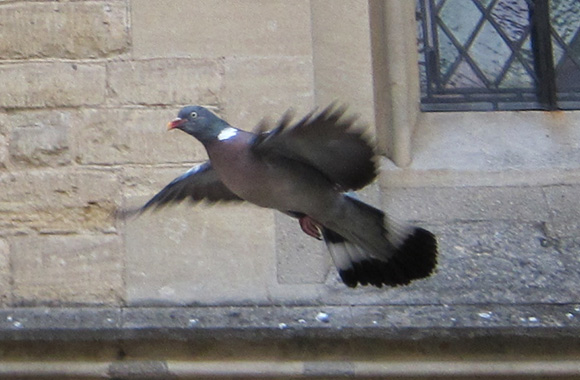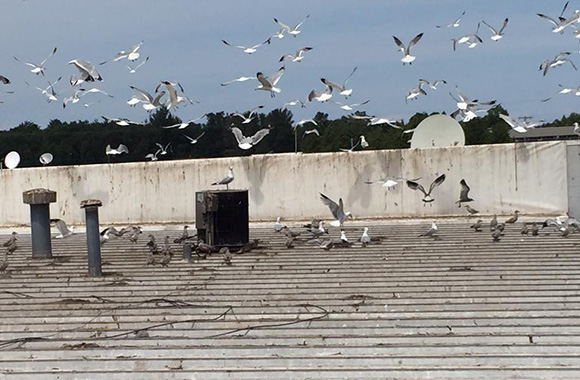Using sound for bird control - aural dispersement
One of the most difficult parts about owning a home is the problem that you may encounter with insects and small animals invading your property. Let’s face it – many of them are gross, and they can make your home a difficult place to enjoy because they can be so disruptive on so many levels. Not only do they make messes, but they also leave their waste and can make a huge amount of noise. Talk about ruining your tranquility. They can make it an absolute mess.
This does not even consider the health risks that they pose. Many animals carry large numbers of diseases and parasites with them. When they come into your property then not only put your children and your pets at risk of being scratched or bitten by these critters, but they also leave their feces around which can contain many of these pathogens. This puts your whole home at risk, which is simply not permissible when you get down to it.


While birds may seem like cute little animals, the truth is that they pose just as much of a risk to you and your family as any other animal. Birds carry just as many pathogens, and what makes them worse is that they usually travel in large groups. When one bird is dropping these parasites onto your yard, you can be sure that dozens, if not hundreds more will be doing so. This can be an absolute disaster for sure.
Of course, what makes such a large group of birds such a concern is that they do drop a whole lot of waste. Even if they do not have any diseases, have you seen what is like to clean up after 30 or 40 birds have been sitting in a tree for a few hours? The ground and all the objects that are underneath them literally look horrible, and that is not always the easiest thing to clean. It sure isn’t anything that anyone wants to clean.
The solution for many is to try to find ways to keep these animals from coming to their property. They go out on a quest to see if there is the ultimate solution to scare away birds so that they will not come back again. That can be a real challenge to say the least.
As we move into this technological age that we are now in, it seems like there is a device that can solve just about any problem you may have. Heck, you can make sure that your doors are locked from all the way on the other side of the planet, and soon your car will be able to drive it wherever you need to go. What a great deal that will be.
With these kinds of innovations, it seems that there must be something that can help to keep birds away and there is. The aural dispersement machines that you will find out there are the technological way to try to deter birds from coming around your home. By emitting a sound that is annoying to the birds, it causes them to move away. Some sound waves that are sent out actually mess with their ability to be able to fly and they are forced to change their flight path so as to stay airborne. If that means that they must move away from your home then you have successfully accomplished your goal.
This is a great innovation, but many wonder if a device like this actually works. The science behind it is sound and it seems like this would be the ultimate way to stop these birds from coming toward your home, but do they really work?
The answer is that these limited devices only have a limited amount of success, and the reasons behind this make perfect sense when you think about it. Start with this fact first. The simpler devices emit the sound in one direction. But do birds only fly in one direction? The answer to this is no, so you must buy several machines that will face all the directions way from your home. That can be quite costly.
You can be devices that will emit the sound pulses in all directions, which handles this problem, but you are still only really thinking in a two-dimensional way. It is hard for these devices to really work properly, because they must emit the sound pulse in a 360-degree radius, not only out, but up and down as well. It is like having an entire grid covered, and these devices are simply not equipped to handle that kind of range.
You also need to know that there are many factors that can stand in the way of the success of this device. If you have a large property, the sound wave that is sent out is not going on forever. Eventually that wave will lose its strength, which can be in as little as 10 or 15 feet from the location where the device is placed. During heavy winds and rains, the effect is also diminished.
Again, the science is solid and if all you want is to keep these critters off of your roof, and then you can have a lot of success with that. But as a surefire means to keep them away from your complete property you are going to be sorely disappointed. It is sad, but that is just the truth.

Aural dispersion for birds works in much the same way as banging a saucepan and lid together to scare off pigeons in the backyard. The noise agitates and scares nuisance birds away. Birds much prefer a quieter, more tranquil setting.
With aural dispersion, it is on a much larger scale. Rather than the saucepan and lid example, machinery or devices are used, delivering one of three types of sound: bird distress calls, percussion-like sounds, or a high-pitched sound that birds can hear but humans can’t.
The sound isn’t just sent out into the air haphazardly: it is projected right in the path of birds, dispersing them from particular areas such as large yards, fields, golf courses, etc. The loud percussion and high-pitched sound devices are not designed to be used in smaller areas, although distress call devices can be found on a smaller scale, perfect for smaller gardens and backyards.
A one-off call or sound session isn’t enough to completely disperse the birds. You will need to repeat the action until the flock has learned that the property is not a pleasant one because they will be bombarded with loud noises whenever they go near it.

